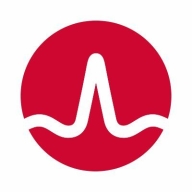

KACE Systems Management Appliance (SMA) and Symantec Patch Management compete in endpoint management and patch management solutions. Symantec appears to have the upper hand with its robust feature set, making it a preferred choice for businesses needing comprehensive patch management.
Features: KACE SMA is recognized for comprehensive asset management, ticketing system integration, and streamlined software distribution. Symantec Patch Management is known for patch compliance, vulnerability assessment, and broad OS coverage. Symantec's extensive feature range enhances its attractiveness for detailed patch and compliance management.
Ease of Deployment and Customer Service: KACE SMA offers straightforward deployment with responsive customer service and supports flexible deployment environments. Symantec Patch Management offers cloud or on-premise deployment but faces challenges with initial setup time and complexity, requiring more technical involvement.
Pricing and ROI: KACE SMA is praised for its competitive pricing and swift ROI, making it appealing to budget-conscious organizations. While Symantec Patch Management is more expensive, it justifies the cost with feature-rich offerings that can lead to significant long-term savings through risk reduction. KACE SMA provides better initial pricing, but Symantec offers greater long-term ROI potential.
| Product | Market Share (%) |
|---|---|
| KACE Systems Management Appliance (SMA) | 4.1% |
| Symantec Patch Management | 0.5% |
| Other | 95.4% |

| Company Size | Count |
|---|---|
| Small Business | 8 |
| Midsize Enterprise | 20 |
| Large Enterprise | 15 |
KACE Systems Management Appliance offers integration capabilities, efficient image deployment, and comprehensive asset management. It supports centralized management across diverse devices and locations, simplifying IT processes and enhancing security.
KACE Systems Management Appliance provides single-pane visibility for endpoint management, mass software deployment, automated patch management, robust scripting, and detailed inventory tracking. It streamlines IT management and improves cyber-security compliance through remote software updates and centralized IT request handling. Despite struggles with scalability and the need for interface improvements, it enables efficient device imaging, script automation, and network management through detailed reporting. Organizations find it effective for software deployment, asset management, and endpoint monitoring, serving thousands of IoT devices and desktops.
What are the key features of KACE Systems Management Appliance?In healthcare, KACE Systems Management Appliance is used for maintaining device compliance and security standards. Educational institutions benefit from its capabilities to manage large numbers of endpoints across campuses. In finance, it aids in strict compliance requirements through automated patch management and detailed reporting. Retail sectors leverage its asset management features to streamline operations across numerous locations.
Symantec Patch Management Solution can assist organizations in meeting their security needs by automating the detection and facilitating the remediation of security vulnerabilities for multiple operating systems (Windows, Mac, Red Hat, CentOS and SUSE) and for Microsoft applications and over 50 third-party Windows applications (Adobe, Java Runtime, common browsers and plug-ins, etc.). Patch Management Solution provides visibility into newly released software updates and the means to identify computers susceptible to the vulnerabilities addressed by such updates. It also automates the download of software update packages from vendor sites and the distribution of those packages to computers which require those patches.
We monitor all Patch Management reviews to prevent fraudulent reviews and keep review quality high. We do not post reviews by company employees or direct competitors. We validate each review for authenticity via cross-reference with LinkedIn, and personal follow-up with the reviewer when necessary.